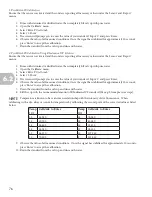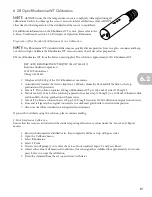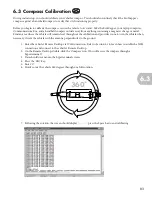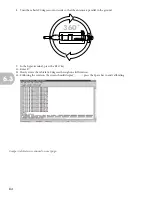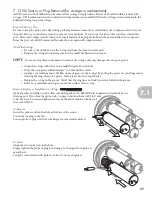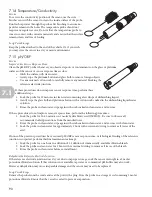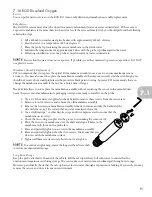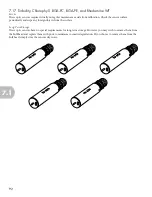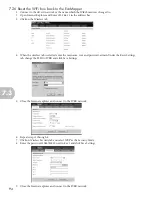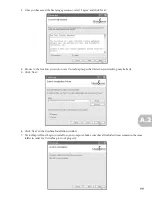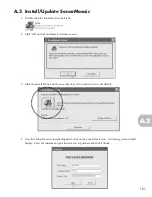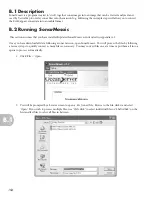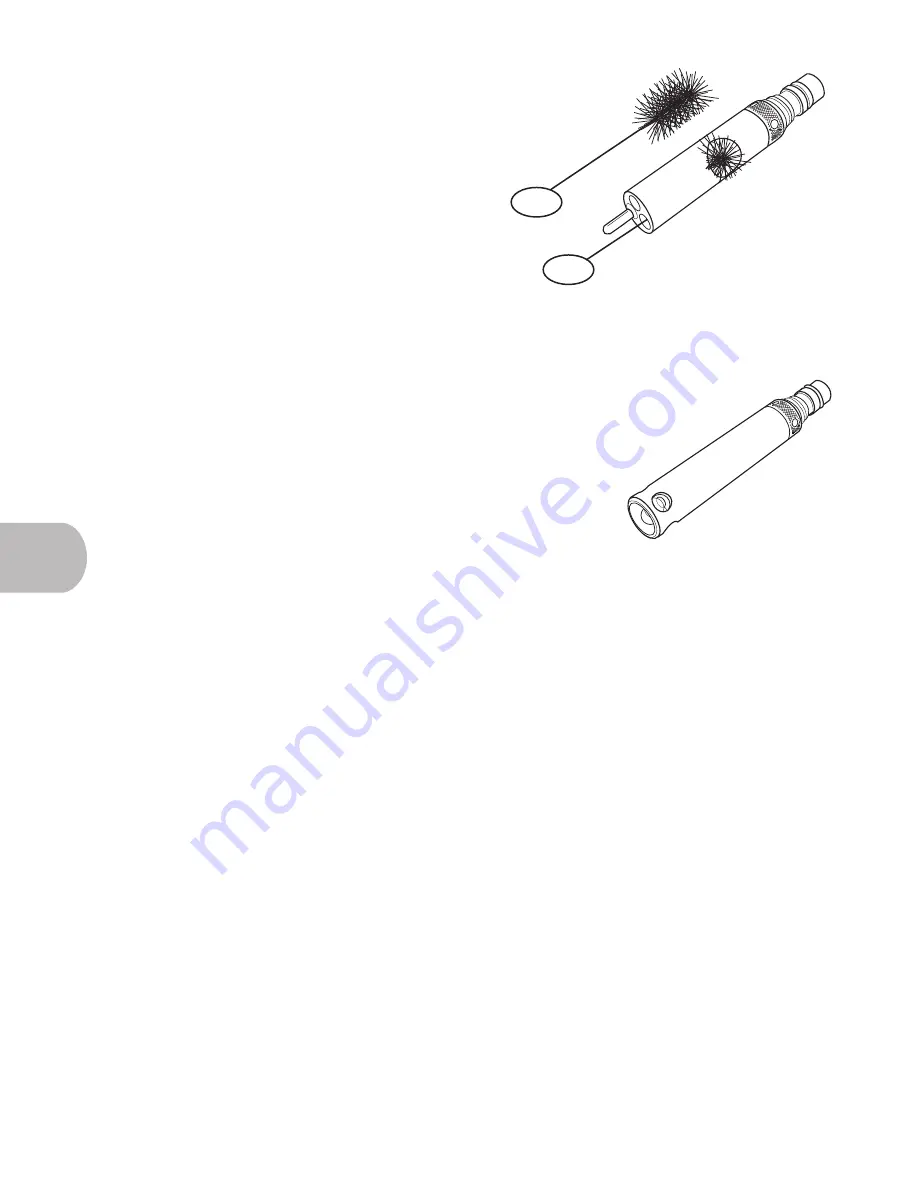
90
7.14 Temperature/Conductivity
Service
To service the conductivity portion of the sensor, use the wire
brushes sent with the sensor to clean the inside surface of the probe.
Run fresh tap water through the probe after brushing to ensure no
particles remain in the holes. The temperature probe should not
require any regular service. Do not allow the temperature probe to
come in contact with corrosive materials and ensure that the surface
remains clean and free of fouling.
Long-Term Storage
Keep the probe attached to the end of the vehicle. Or, if you wish,
you may store the sensor in a dry or moist environment.
7.15 pH/ORP
Service
Improve Slow Sensor Response Time
Clean the pH/ORP probe whenever you observe deposits or contaminants on the glass or platinum
surfaces of the sensor or sensor response time is slow.
• Wash the surface with clean water.
• Gently wipe the platinum button and glass bulb to remove foreign objects.
• Use a moistened cotton swab to carefully remove any material blocking the
reference electrode junction.
If these procedures do not improve sensor response time, perform these
additional steps.
1. Soak the probe for 15 minutes in clean water containing a few drops of dishwashing liquid.
2. Gently wipe the glass bulb and platinum button with a cotton swab soaked in the dishwashing liquid/water
solution.
3. Rinse the probe in clean water, wipe again with swab soaked in clean water, and re-rinse.
If these procedures do not improve sensor response time, perform the following procedures.
1. Soak the probe for 30-60 minutes in 1 molar hydrochloric acid (1M HCL). Be sure to observe all
recommended safety precautions from the manufacturer.
2. Rinse the probe in clean water, wipe again with swab soaked in clean water, and re-rinse with clean water.
3. Soak the probe in clean water for approximately 1 hour with occasional stirring to remove all traces of the
acid.
If none of the previous procedures have restored pH/ORP sensor response time, or if biological fouling of the reference
junction is suspected, perform this final maintenance attempt.
1. Soak the probe for one hour in a dilution of 1:1 dilution of commercially-available chlorine bleach.
2. Soak the probe in clean water for 1 hour with occasional stirring to remove all traces of the bleach
3. Rinse the probe in clean water before re-installment.
Rehydrate the Reference Electrode Junction
If the reference electrode junction does dry out due to improper storage, soak the sensor overnight in a 2 molar
potassium chloride solution. If this solution is not available, tap water or commercial pH buffers may also work.
However, dehydration may cause irreparable damage and the sensor may need to be replaced.
Long-Term Storage
Remove the probe from the sonde and seal the port with a plug. Store the probe in a storage vessel containing 2 molar
potassium chloride. Ensure that the vessel is sealed to prevent evaporation.
7.1

